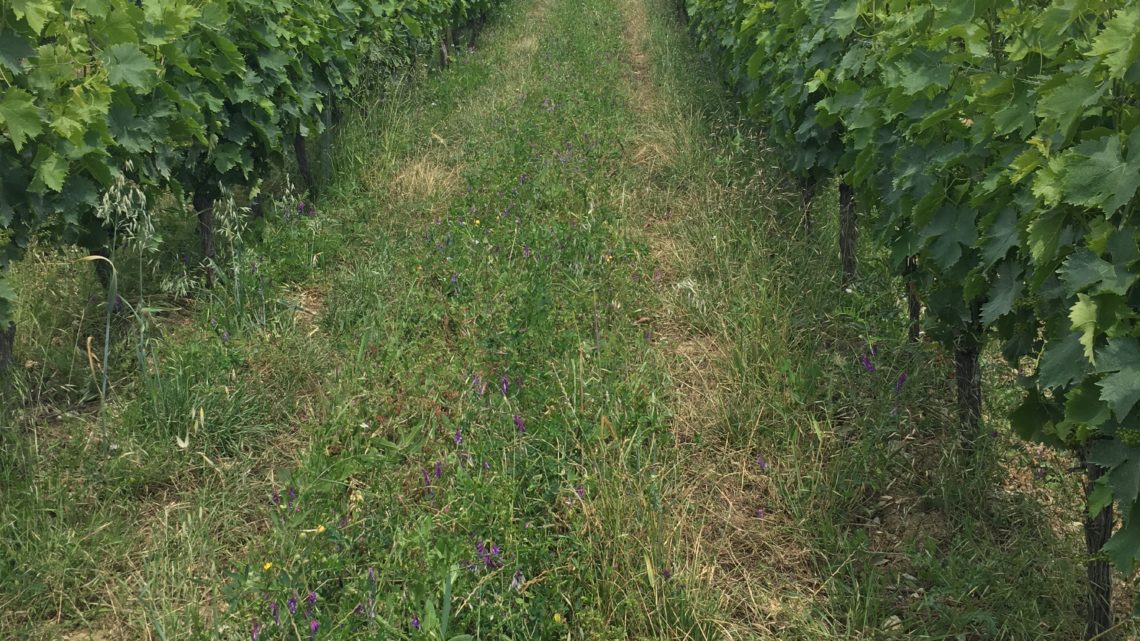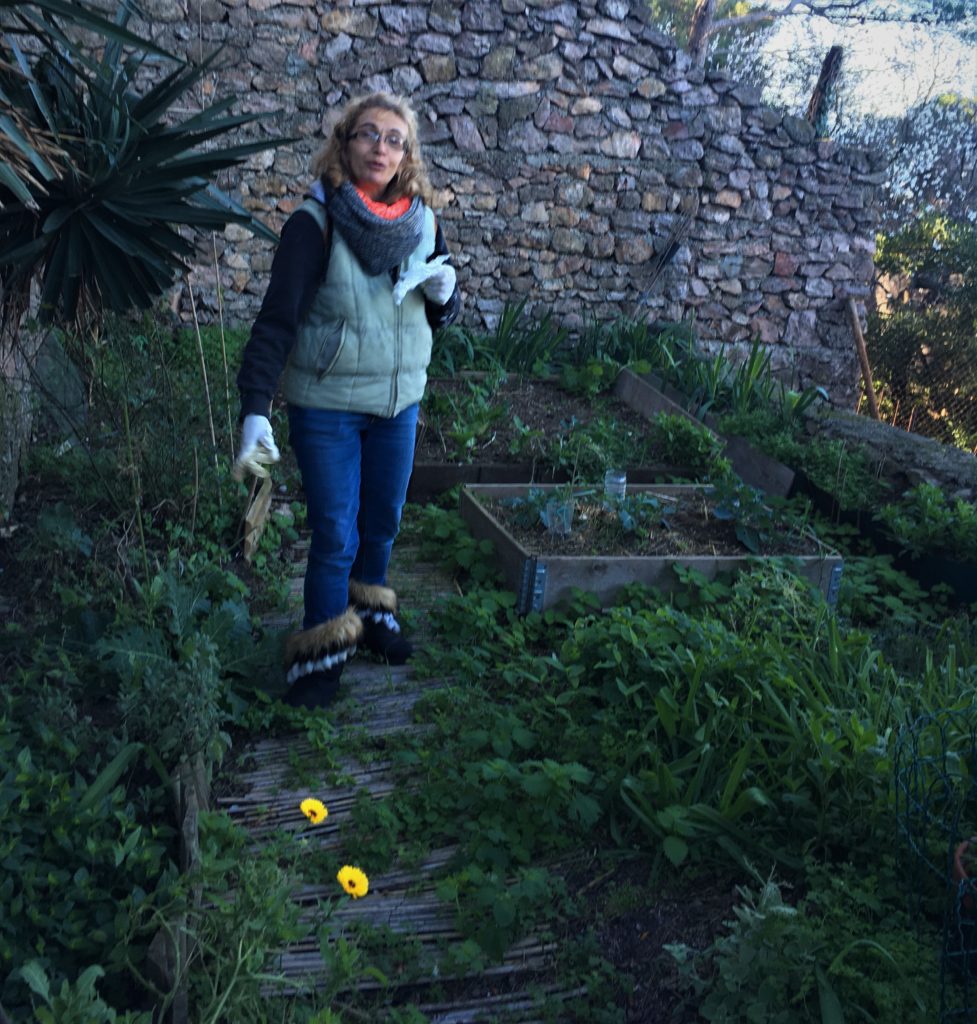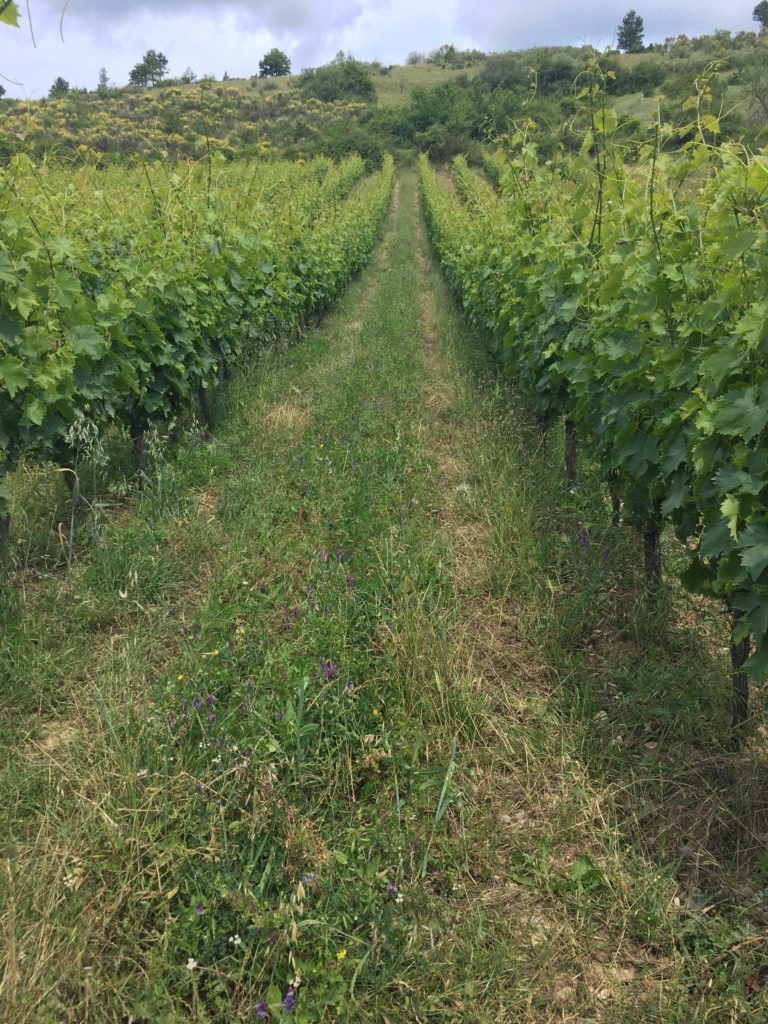
The secret power of soils
It’s the last few days before winter really, finally, hopefully settles in and the snow blankets the ground. My garden is a brown, muddy mess. Looking at it gives me the same alarmed feeling as I get when driving past barren fields anywhere. I can feel the soil eroding, I can almost see the dust blowing off the surface, I imagine the fertility invisibly draining away, and my gut hurts.
I have many excellent excuses for why my garden isn’t better covered, the best of which involve great intentions not yet put into practice. Last year I spent several happy afternoons in my new friend Sylvie’s terraced garden in Sète (France), revelling in the constant experimental process that is permaculture, and vowing to take it up back home in Montreal. One step was to plant a mini ‘cover crop’ of soil-enriching clover, but somehow it only sprouted anemically.

On large farms that provide most of our food, there are also good excuses for barren soils. Foremost, a system that rewards productivity and efficiency over soil health and the environment. But as we become increasingly aware of the need to live lightly on the earth and of the role that soil carbon can play in mitigating climate change, excuses begin to fade or rather, the need for systems change sharpens. It has become clear that avoiding the worst impacts of climate change will require not only steep reductions in emissions such as from cars, planes and buildings, but also removing carbon dioxide from the atmosphere at a massive scale.
Options for carbon removal include technical solutions (direct air capture, carbon mineralization) and natural ones (tree planting, farm management practices). Agricultural soils have often been last in line for attention in national and global carbon negotiations, although this is slowly changing in recent EU, US and Canadian climate or food policies. Farming is complicated: food security issues can trump carbon sequestration goals; entrenched habits and sunk investments make change hard.
There is intense debate among researchers about the degree to which regenerative farming practices (crop rotation, cover crops, rotational grazing, agroforestry) 1 can draw carbon into the soil and keep it there. While we know that many agricultural soils across the planet can technically store much, much more carbon than they currently do, it’s not clear whether the regenerative farming practices that provide sequestration can overcome the socioeconomic and political barriers of getting to scale. However, there IS general agreement that there are many other benefits of regenerative farming practices, including reduced soil erosion, better water retention and improved resilience to weather extremes.
Better farming systems
My sabbatical last year provided a unique opportunity to explore carbon, soils and farming with my dear friend Hal Hamilton, of the Sustainable Food Lab. Our guiding question was ‘how could we change the enabling conditions so that regenerative and equitable farming systems become the new norm?’ — understanding that markets and public policies are probably the biggest creators of those enabling conditions.
We began with an idea for a Soil Carbon Sequestration Accelerator, which morphed into a Better Farming Systems Lab as it became clear that environmental issues were much broader than carbon, that measuring soil carbon reliably is still a difficult, costly and fraught issue, and that the social and human sides of farming are core. Hal and I, sometimes joined by Sustainable Food Lab colleagues, spoke with over 50 people from around the world — mainly in North America and Europe — listening to their projects, successes, failures and learnings.
After all these interviews, many readings and much discussion2, our conclusion was that despite hundreds of initiatives and thousands of pioneering regenerative and agroecological farmers, progress at scale is slow — too slow in the context of the climate emergency, of soil erosion and water pollution, and of the economic stress that too many farmers live.
Many pilots reach only early adopters, so pioneering alternative approaches remain marginal in their ability to impact millions of hectares. The mainstream “regime” resists change because of vested interests and a conservative culture. Farmers keep doing what they know how to do, in ways that have successfully led to steady productivity gains over the last several decades. Corporate sustainability programs mostly focus on each company’s own ingredients, not farming systems or landscapes. Governments tend to be populated with fragmented bureaucracies and conservative mindsets. But, as Leonard Cohen sings,
Ring the bells that still can ring
Forget your perfect offering
There is a crack, a crack in everything
That’s how the light gets in.
Alongside turmoil and loss, Covid-19 has moved parts of systems, which previously seemed stuck, to change. The role that governments can play (or avoid playing, as the case may be) in helping citizens adapt to change has become clearer, whether through income subsidies, emergency food aid or funding to build back better. The food system’s ability to function through disruption, and simultaneously the importance of local food systems should national borders close, has also been demonstrated.
As systems geeks,3 , we looked for ways to understand the circumstances within which policy, markets, and culture shift. Models like the Geels Multi-Level Perspective, which are being used to frame a wide range of systems change initiatives around the world, suggest that a combination of strategies are needed, from incremental to radical, and from on-the-ground practices to improved enabling conditions for those practices. Strategies which are often experienced as competing (like organic and conservation agriculture) can, in the best scenarios, bring improvements to each other, with more holistic and radical approaches informing those working for incremental but large scale change.
The questions we asked, and continue to ask, include:
● How could strategies by each organization, company or government in a multi-stakeholder lab be more effective or even transformative, and how can contact with each other catalyze that to happen?
● In what circumstances do innovations remain marginal and in what circumstances do innovations scale?
● Although mainstream farming culture is inherently conservative, what are the conditions for rapid farmer-opinion breakthrough?
● As shifts in corporate supply chain goals bump up against competitive pressures, what pre-competitive agreements or collaborations with government can unlock further progress?
● How can public policies help farmers earn decent livelihoods while protecting the environment and sequestering carbon?
● As the climate crisis intensifies, and prevailing narratives about progress change, how might we best take advantage of this shifting landscape?

Farming systems are different every place they develop in the world, and we listened for ways that different change strategies could inform each other. We heard about:
● a regional government in India supporting millions of smallholders’ transition to organic farming 4
● a global corporation that works to support coaching for farmers that are early adopters of regenerative agriculture, while improving measurement and building systems thinking capacity 5
● a region in France that has reached 30% organic production over many decades of work with farmers, businesses and local governments6
● agronomists from Australia and the UK working to support farmers adopt new farming practices while maintaining or increasing profits 7
● many researchers and entrepreneurs working to measure carbon sequestration in soils efficiently and effectively
● and much, much more.
The Scale Lab
So where did all these conversations and thinking leave us?
For Hal, our research helped inform the creation of a ‘Scale Lab’ in the US Midwest’s soy and corn belt. Facilitated by the Sustainable Food Lab, it is centred around upgrading the soil health and regenerative agriculture strategies of several food and farming organizations and companies. 8. The first steps include a review of current programs in the region, analysing theories of change as well as costs and impacts. A lot of progress is already underway. Millions of tons of carbon are already sequestered through cover crops and reduced tillage on tens of thousands of acres. But all these projects are, so far, only reaching the early adopters, and not the broad middle of farmers, so the next steps are to work on overcoming barriers and increasing enablers of scale, including not only incentives measured in dollars but also shifts in habits and beliefs that keep current ways of doing things locked in.
Personally, I gained a much better understanding of the system and a desire to see where systems change in farming is happening in Canada9, now that I’m back. I know that work to spread regenerative practices and approaches is happening at different farm scales here, and that there are policy windows opening with different levels of government. Time is short, but I’m convinced that we can find cracks in the system to let the light in.
Footnotes
- Unlike organic agriculture, regenerative agriculture does not have a globally recognized definition, but rather an informal set of objectives (building soil organic matter for soil health and climate mitigation and adaptation…) and a suite of farm practices (cover crops, minimising soluble fertiliser use, integration of livestock…) used to achieve them (see Merfield, 2019)
- One of the more active places soils and farming are being discussed is a listserv run by Breakthrough Strategies for farmers, policy makers, investors, philanthropists, scientists, innovators, and healthy soils advocates committed to scaling the field of healthy soils and soil carbon sequestration. Subscribe here: bit.ly/SCSlistser
- Hal and I are both part of the Academy for Systems Change
- Zero Budget Natural Farming in Andhra Pradesh
- General Mills is one company making such efforts
- Biovallée
- For example, Soil Capital, that works with a GHG calculator called the Cool Farm Tool
- The Scale Lab is populated by companies leading sustainability in the region, including Unilever, Pepsi, Oatley, General Mills and Cargill, and several collaborative platforms including the Sustainable Food Lab (SFL), Midwest Row Crop Collaborative, the Field to Market Alliance, SAI Platform’s Regenerative Agriculture Working Group , and the US Farmers and Ranchers Alliance
- These include Farmers for Climate Solutions, Regeneration Canada, and several food companies making efforts to support more sustainable farming practices.